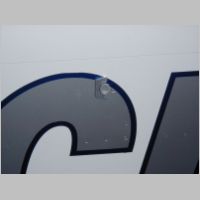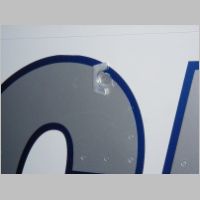Static Ports Greatly Affect Performance Specs
Don't make the same mistake I did. Before posting performance specs on your RV-10, make sure you have flown a GPS course using 3 or 4 legs, and calculated your actuall True Airspeed. You'll need to know pressure altitude and OAT and everything else to get reliable measurements. Luckily these are made very easy on my Chelton system. Under no circumstances would your GPS groundspeed have any relevance to how fast your plane is, on a discussion group....you're looking for AIRspeed, and more specifically TRUE airspeed...that is corrected for instrument error.In my initial 100+ flying hours, I didn't realize it but my airspeed was indicating 6.5-7.5kts too low due to my static ports being absolutely flush with the skins. Supposedly I was suppsed to NOT prime the skin inside when I put them in, and I was supposed to paint the ports along with the plane, so they actually stuck out slightly. Below you'll see a couple of pics of one attempt to fix the error, once I found it. I first tried gluing on discs over the ports that made them stick out. That corrected the error to about -4 kts. These bridges were my 2nd attempt, after removing the discs. They corrected it to -4 to -4.5 kts. I finally gave up and remove the static ports altogether and installed the newer style Cleaveland ports, that stick out a bit and are rounded in shape. These have corrected the error so that I had a calculated error of about -1.8kts....close enough for me.
So do your best to provide GOOD numbers.
Here is some GPS spreadsheet stuff I got from Kevin Horton's site...thanks Kevin, that you'll find very helpful:
GPS Groundspeed Airspeed Calculation Spreadsheet
GPS Groundspeed sheet Documentation

|

|